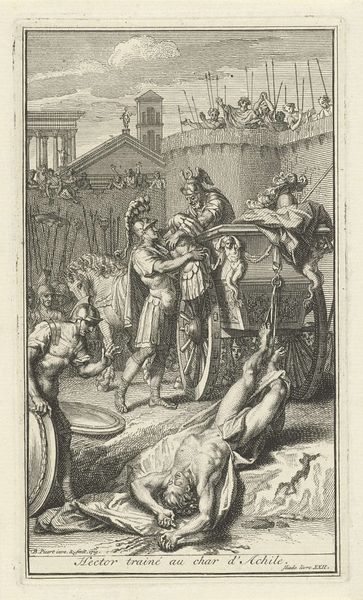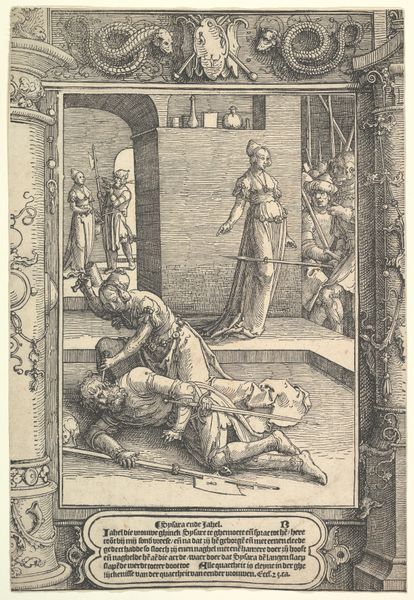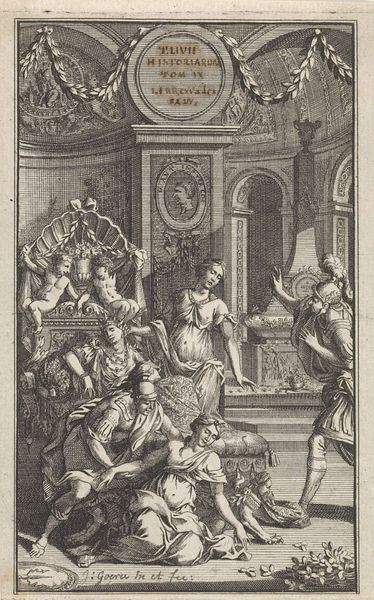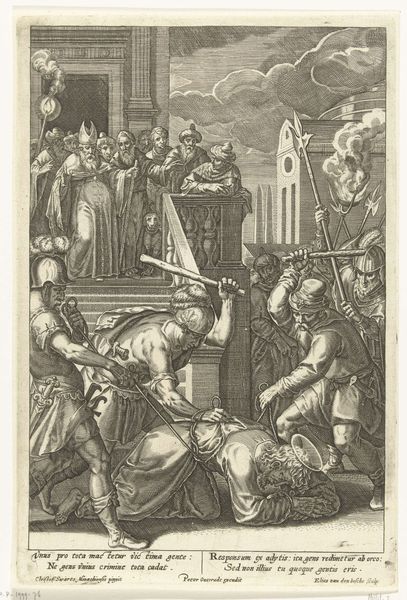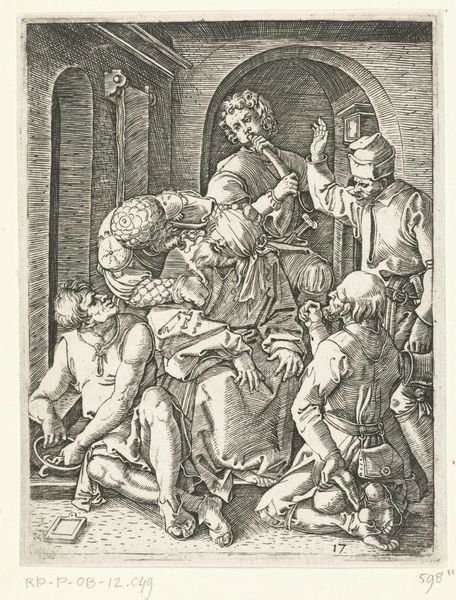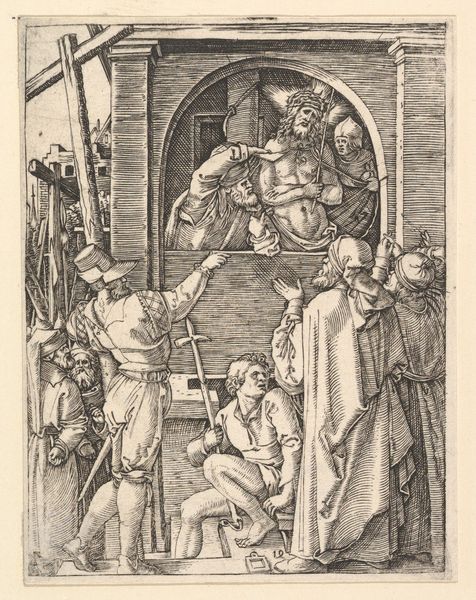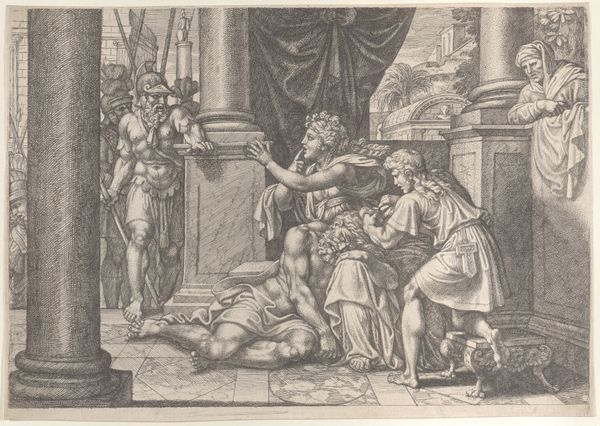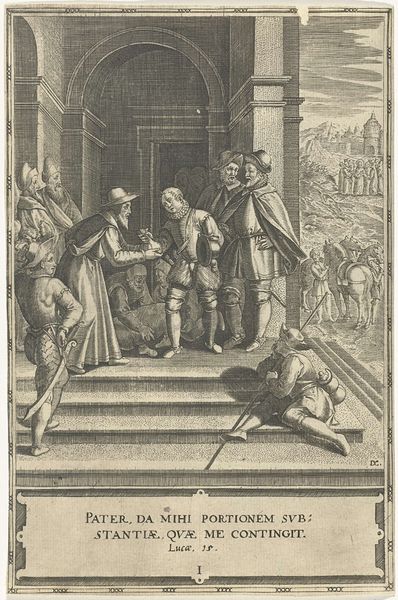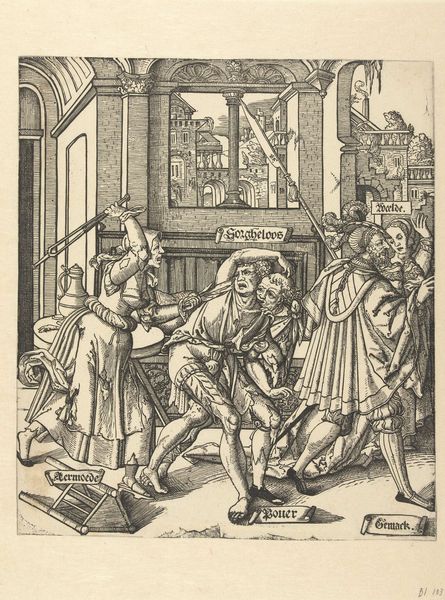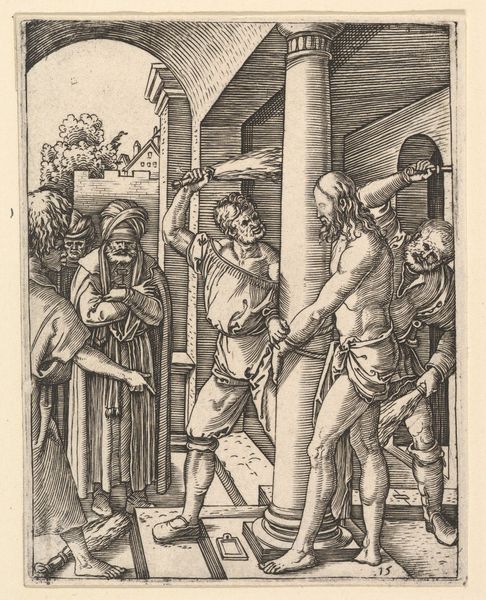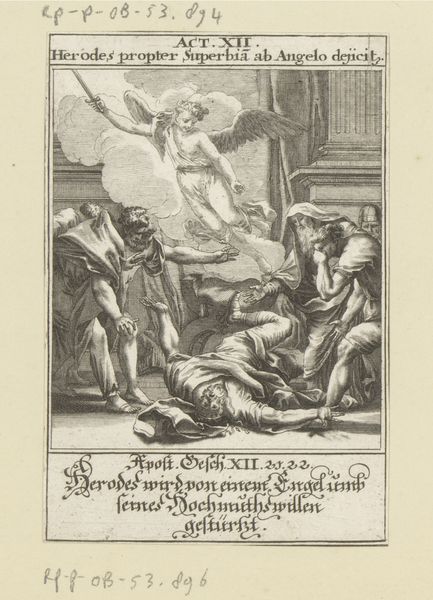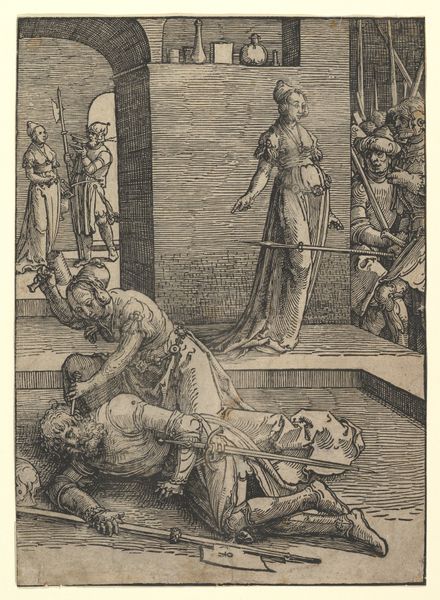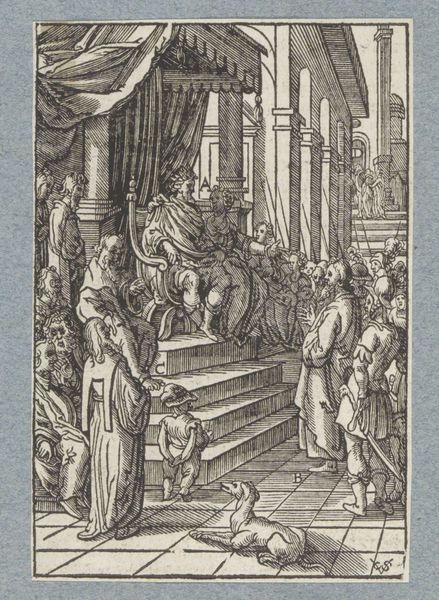
print, engraving
narrative-art
mannerism
figuration
line
history-painting
italian-renaissance
engraving
Dimensions: height 442 mm, width 308 mm
Copyright: Rijks Museum: Open Domain
Editor: This is "The Beheading of Saint John the Baptist," an engraving by Giovanni Battista Cavalieri from 1578. It’s a gruesome scene, but I’m struck by the architecture. It's so formal, almost theatrical. What are your thoughts when you look at this piece? Curator: Well, beyond the immediate shock value of the image itself, I'm drawn to the cultural context that made such a scene acceptable, even desirable, for public consumption. Consider the Mannerist style—the exaggerated figures and dramatic compositions weren't simply aesthetic choices. They were tools to provoke emotional and perhaps even political responses in the viewer. Editor: Political responses? How so? Curator: Think about the historical moment. The Counter-Reformation was in full swing. Images like this served as stark reminders of religious authority and the consequences of defiance. This wasn't just about depicting a biblical story; it was about reinforcing power structures and communicating the cost of dissidence. Do you notice how the composition directs your eye? Editor: Yes, to the head. Everything leads back to that horrific focal point! And it is so strange. There are what appear to be onlookers, as if in a viewing box. Curator: Exactly! Cavalieri positions us, the viewers, almost like privileged spectators in this drama. Consider, too, how the print medium itself contributes. Engravings allowed for wider distribution and accessibility of such imagery, amplifying its propagandistic effect. This brings to mind broader questions about art, power, and spectatorship. Editor: So, this engraving wasn’t just a historical depiction but a tool to influence public opinion? Curator: Precisely! The artwork reflects how powerful images play into reinforcing institutions. Editor: It makes me rethink how I understand images from this period. Thanks! Curator: Likewise! It’s important to be mindful of these dynamics and question the motivations behind visual representation throughout history.
Comments
No comments
Be the first to comment and join the conversation on the ultimate creative platform.
